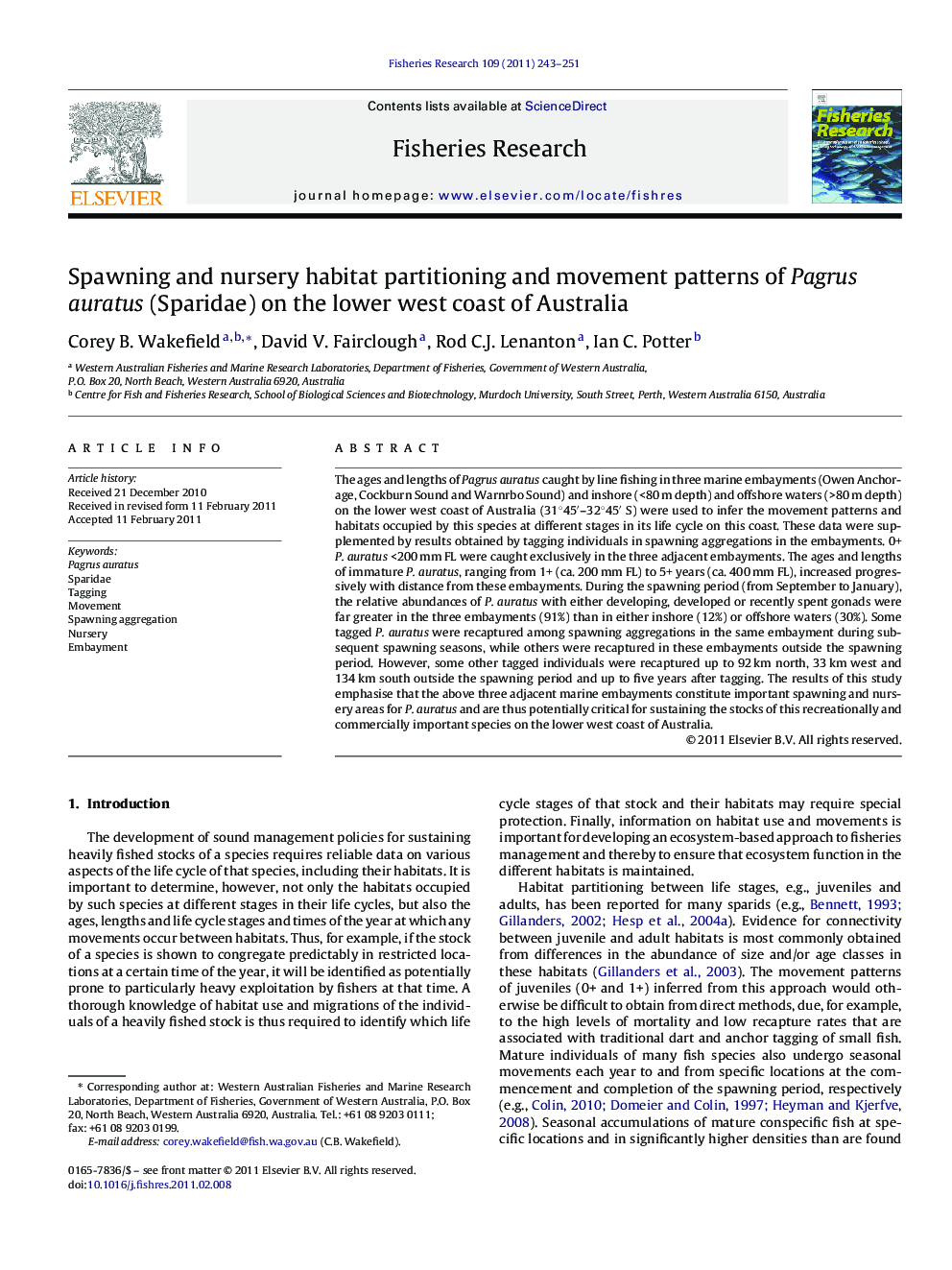| کد مقاله | کد نشریه | سال انتشار | مقاله انگلیسی | نسخه تمام متن |
|---|---|---|---|---|
| 4543648 | 1626846 | 2011 | 9 صفحه PDF | دانلود رایگان |

The ages and lengths of Pagrus auratus caught by line fishing in three marine embayments (Owen Anchorage, Cockburn Sound and Warnrbo Sound) and inshore (<80 m depth) and offshore waters (>80 m depth) on the lower west coast of Australia (31°45′–32°45′ S) were used to infer the movement patterns and habitats occupied by this species at different stages in its life cycle on this coast. These data were supplemented by results obtained by tagging individuals in spawning aggregations in the embayments. 0+ P. auratus <200 mm FL were caught exclusively in the three adjacent embayments. The ages and lengths of immature P. auratus, ranging from 1+ (ca. 200 mm FL) to 5+ years (ca. 400 mm FL), increased progressively with distance from these embayments. During the spawning period (from September to January), the relative abundances of P. auratus with either developing, developed or recently spent gonads were far greater in the three embayments (91%) than in either inshore (12%) or offshore waters (30%). Some tagged P. auratus were recaptured among spawning aggregations in the same embayment during subsequent spawning seasons, while others were recaptured in these embayments outside the spawning period. However, some other tagged individuals were recaptured up to 92 km north, 33 km west and 134 km south outside the spawning period and up to five years after tagging. The results of this study emphasise that the above three adjacent marine embayments constitute important spawning and nursery areas for P. auratus and are thus potentially critical for sustaining the stocks of this recreationally and commercially important species on the lower west coast of Australia.
Research highlights
► Habitat partitioning is reported among major life cycle stages of Pagrus auratus.
► Three metropolitan embayments are crucial for spawning aggregations and juveniles.
► Sub-adults occupy deeper offshore waters adjacent to the embayments.
► A closure to fishing has been implemented to protect spawning aggregations.
► Industrial development in the embayments may influence spawning and recruitment success.
Journal: Fisheries Research - Volume 109, Issues 2–3, May 2011, Pages 243–251